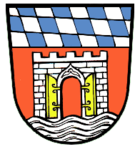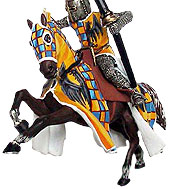| Dockings and Events |
|
| Museum ship Vlotburg in Deggendorf starts on 05.04. till 28.04.2013 |
 |
Unser Liegeplatz: Städtischer Schiffsanlegeplatz an der Donau

Deggendorf is a town in Bavaria, capital of the district Deggendorf. The earliest traces of settlement in the area are found near the Danube, about 8,000 years ago. Both Bronze Age and Celtic era archeological finds indicate continuous habitation through the years. Henry II, Holy Roman Emperor established in 1002 his supremacy over the area. 

In 1337 or 1338, a pogrom in Deggendorf was part of a wave of anti-Semitism associated with the Black Death.[2] Fires started in the Jewish quarter spread and destroyed much of the town. The Heilig-Grabkirche St. Peter und St. Paul (Church of the Holy Sepulchre, Saints Peter and Paul) was begun in 1360 in the former Jewish quarter.[2] From the fifteenth century it contained as a relic a monstrance conataining a communion wafer which had supposedly been miraculously saved from desecration by the Jews, though contemporary accounts of the pogrom make no reference to such events. The church became the site of the annual Deggendorfer Gnad, an important Bavarian Catholic pilgrimage. In the 1970s, the focus of the pilgrimage was changed from the supposed miracle to a more generic celebration of the Eucharist. The festival was finally discontinued in 1992, when Manfred Müller, Bishop of Regensburg, erected a plaque decrying the legend.[3][4]
Displaced Persons Camp
Deggendorf was the site of a displaced persons camp for Jewish refugees after World War II. It housed approximately 2,000 refugees, who created a cultural center that included two newspapers, the Deggendorf Center Review and Cum Ojfboj, theater group, synagogue, mikvah, kosher kitchen, and more. The camp even issued its own currency known as the Deggendorf Dollar. Many of the camp's residents were survivors of the concentration camp at Theresienstadt. The camp closed on June 15, 1949.

Quelle: wikipedia.org |
|
 |
|
| |
|
|
|

